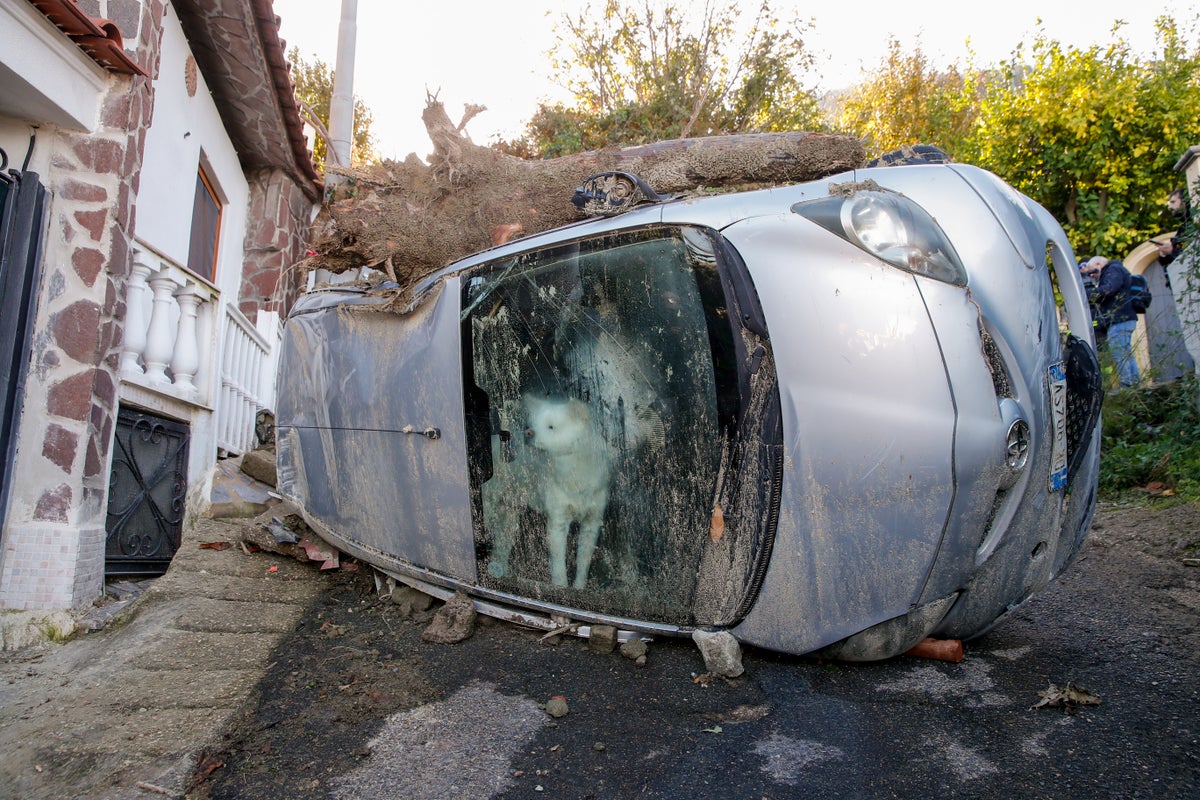
The Italian resort island of Ischia has a long history of natural disasters, but experts say this weekend’s landslide that has killed eight people and left five missing was exacerbated by a combination of climate change and often-illegal excessive development.
Search teams digging through meters of mud and debris for a third day recovered the eighth victim Monday, identified by the Naples prefect as a 15-year-old boy whose younger siblings were confirmed dead over the weekend. Victims include a three-week old infant who was named Giovangiuseppe after the island’s patron saint, and his parents.
Exceptionally heavy rain caused a chunk of Mount Epomeo to come crashing down before dawn on Saturday, gaining speed as it entered the populated port town of Casamicciola, where it demolished buildings and carried cars and buses into the sea. Some 30 houses were inundated by the mud and water, and more than 200 residents in the town of 8,300 remain homeless, according to officials.
“It came down the valley. ... It took down with it 30-, 40-year-old trees, trees that have not been cut for years,’’ said Parisio Jacono, a resident of Casamicciola. In the town, it leveled “all the gardens and the vineyards,” moving huge stones.
Environmental experts and geologists have pointed to a pattern of construction that interferes with natural water runoffs, as well as a prevalence of illegal buildings on the mountainous island of volcanic origin just off Naples that is susceptible to both landslides and earthquakes.
“In Ischia there was an extreme event, very strong rain, the result of climate change, on an island that has become a symbol of illegal construction,’’ said Stefano Ciafani, the president of the environmental group Legambiente.
He cited 27,000 requests to regularize unapproved buildings on the island in a series of amnesties since 1985, representing about half of all Ischia's buildings. While many requests are still pending, some 600 of the structures have been ordered demolished. But Ciafani said that, statistically, just a third of all ordered demolitions are ever carried out in Italy.
“We don’t know if the houses that were hit by the landslide were illegal,’’ Ciafani said. “But Casamicciola, the town where the landslide happened, is one of the towns with the most construction abuses.”
In Casamicciola, the requests for amnesties number 3,506. Like many on the island, the illegally built structures are primarily for vacation homes, Ciafani noted, not primary residences that fell under the scope of the 1985 amnesty.
Casamicciola itself has become synonymous with natural disasters. Two other landslides, in 2006 and 2009, claimed five lives, and a relatively minor 4.0-magnitude quake in 2017 killed two people. More than 2,000 people died in a 5.8-magnitude quake there in 1883, and a landslide in 1910 killed about a dozen.
Fabrizio Curcio, the head of Italy's civil protection agency, acknowledged the “anger (and) pain” provoked by the images out of Ischia. They include a white villa balanced over a precipice, and a mud-covered man floating in water, clinging to a shutter.
“They remind us of the fragility of the territory,'' he said, noting that 7 million Italians live in areas at risk of flooding, and 1.3 million in zones at risk of landslides. “Our territory is the pearl of the Mediterranean, but it has some critical issues that are evident."







